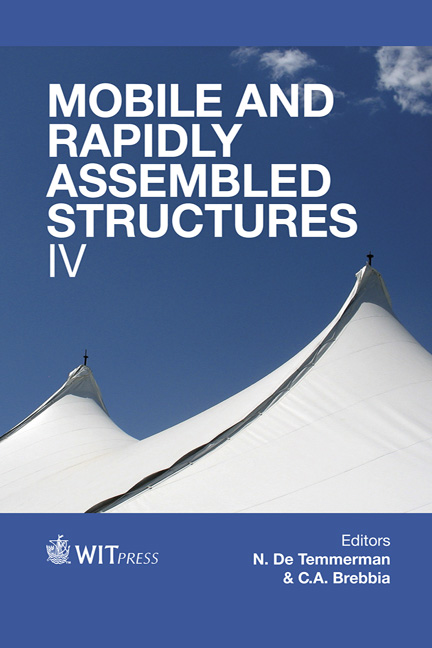The Thermal Performance Of Shelter Modelling:improvement Of Temporary Structures
Price
Free (open access)
Transaction
Volume
136
Pages
9
Published
2014
Size
1,672 kb
Paper DOI
10.2495/MAR140071
Copyright
WIT Press
Author(s)
S. Obyn, G. van Moeseke & V. Virgo
Abstract
There exist many disasters, whether natural or caused by human factors. In emergency situations, it is important to provide shelters to protect the population and the support against their environment and to give them some privacy. Unfortunately, contexts and exposure constraints in which these items are used can be very different which implies that their performance can be reduced with a direct impact on occupant comfort. Furthermore, given the very large scale of emergency camps, the intake of fuel in winter condition turns into a major logistical challenge. It is crucial to improve the thermal performance of emergency shelters to 1) increase their indoor comfort and 2) reduce their fuel/wood consumption and related pressure on natural resources. The purpose of this paper is to discuss the difficulties in achieving a realistic thermal model of lightweight structures, taking into account the air permeability of fabrics, their light transmission and the imbrication of several elements (multi-layered shelter). We created such a model of the IFRC/ICRC/UNHCR standard family tent, based on the building oriented Energy+ thermal simulation model. This model is calibrated and validated by comparing simulation results with in situ measurements realised in the Belgian Building Research Institute (BBRI) facility in Limelette, Belgium. To evaluate the quality of the thermal model, we consider de mean deviation between calculated and measured temperatures. The calculated deviation varies from 1.6°C to 1.9°C. This model provides objective
Keywords





